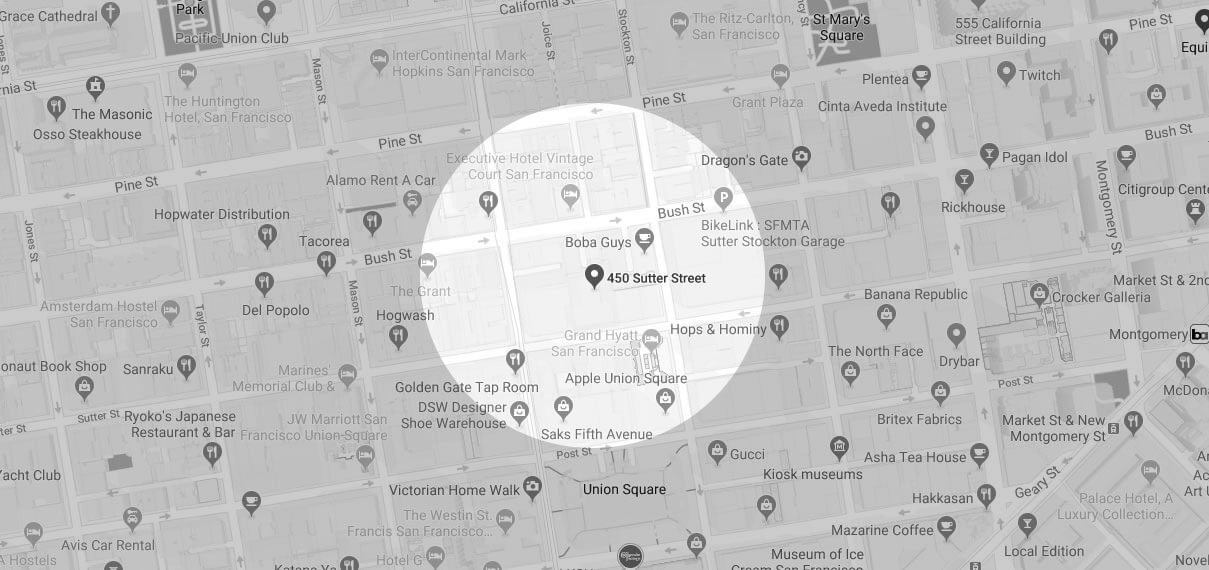Written by Dr. Leyli Shirvani, My Dentist San Francisco
1. Introduction to Emergency Dentistry
Dental emergencies don't always come with a forewarning, unlike scheduled check-ups that follow an organized, preventative approach. The unpredictable nature of such events can create anxiety for many, especially those unfamiliar with what to expect during an urgent visit. It’s therefore essential to spread awareness about the processes involved in emergency dental care, helping to prepare patients mentally and physically.
The complexity and immediacy of dental emergencies can range from minor issues like a chipped tooth to more severe cases, such as traumatic injuries or abscesses. Recognizing these emergencies and understanding the urgency associated with each is pivotal in ensuring the best possible outcome.

2. Differentiating Emergencies from Non-Emergencies
The dental spectrum is broad, encompassing various conditions that may or may not need immediate attention. A sudden, unbearable toothache, profuse bleeding from an extraction site, or a tooth knocked out due to trauma are clear emergencies. These instances are critical and can have lasting repercussions if not promptly addressed.
In contrast, a minor toothache, a lost filling, or a broken dental appliance, while urgent, might not necessitate instant professional intervention. Assessing the severity and understanding the level of urgency required prevents unnecessary panic and ensures timely care.
3. Immediate Steps Pre-Visit
Before you reach the clinic, adopting certain preliminary measures can drastically impact the treatment’s efficacy. For example, if a tooth gets knocked out, understanding how to handle it is vital. Holding it by the crown, rinsing it gently without scrubbing, and attempting to place it back in the socket or keeping it in milk can increase the chances of successfully re-implanting the tooth. In thai case, time is gold. The sooner the replant happens the higher chance of success.
In instances of severe pain, inflammation, or swelling, applying a cold compress to the affected area can alleviate symptoms temporarily, making the wait for professional care more bearable. These initial steps are essential in navigating the crucial window between the onset of an emergency and receiving expert attention.
4. Pain Management Protocols
One of the most debilitating aspects of dental emergencies is the pain that often accompanies them. While the immediate impulse might be to grab the nearest painkiller, it’s crucial to be judicious about medication. Some over-the-counter analgesics can offer relief, but they might also have implications on subsequent treatments, especially if root canal treatment is required and teeth need to be tested for vitality.
It’s also worth noting the common misconception of placing aspirin directly on the gums near the ailing tooth. This method can result in chemical burns and exacerbate the problem. Instead, relying on expert recommendations and using prescribed medication ensures safe pain management.
5. Handling Soft Tissue Injuries
Injuries to the soft tissues of the mouth—including the lips, cheeks, tongue, and gums—pose unique challenges. These tissues are sensitive, and injuries can lead to pain, swelling, and in severe cases, significant blood loss. Immediate care involves applying pressure using a clean, damp piece of gauze to control bleeding. If bleeding is persistent, it’s a clear sign that professional care is urgently needed.
Deep lacerations or puncture wounds might necessitate sutures and must be addressed promptly. It's also crucial to be vigilant about potential infections that can follow such injuries, emphasizing the need for expert intervention and subsequent follow-ups.
6. Addressing Tooth Fractures and Chips
The integrity of our teeth is paramount, not just for functional reasons but also for aesthetics. When a tooth gets chipped or fractured, it might be tempting to dismiss minor damage as purely cosmetic. However, even small chips can make teeth vulnerable to further breakage or decay. In cases of more pronounced fractures, where a substantial portion of the tooth is damaged or the inner pulp is exposed, the risk of infections and complications multiplies.
The treatment approach varies based on the severity of the fracture. While cosmetic procedures like bonding or veneers might suffice for minor chips, root canals, crowns, or even extractions could be necessitated by more severe fractures.
7. Lost Fillings and Crowns
Dental restorations like fillings and crowns serve essential functions, restoring tooth structure and preventing further decay. Losing a filling or crown is more than just a cosmetic issue. The exposed tooth is susceptible to sensitivity, decay, and potential structural damage. It's also essential to understand that while the initial loss might be pain-free, neglecting timely intervention can lead to escalated problems.
Over-the-counter dental cement can serve as a temporary fix, providing a protective barrier until professional restoration can occur. However, such solutions are interim at best, and a visit to the dental practice should be scheduled at the earliest to prevent complications.
8. Infections and Abscesses
Among the most serious dental emergencies are infections and abscesses. Characterized by intense pain, swelling, pus formation, and sometimes accompanied by fever, these conditions can rapidly progress and compromise overall health. Infections aren't isolated; they have the potential to spread to other parts of the body, making swift treatment crucial. The management of such conditions typically involves draining the abscess, prescribing antibiotics to combat the infection, and then addressing the root cause, which could be anything from a decayed tooth to gum disease.
9. Addressing Objects Lodged Between Teeth
While it might seem relatively trivial compared to other dental emergencies, having an object stubbornly lodged between teeth can be a source of significant discomfort and potential injury. Everyday items like popcorn kernels or fragments of hard food can become trapped, causing irritation to the gums and pressure on the teeth.
Gentle use of dental floss or a water flosser can often resolve the issue. However, it’s vital to avoid using sharp or inappropriate tools that can cause more harm. If initial attempts fail, it's prudent to consult a dentist. With specialized tools and expertise, removal becomes a straightforward process, minimizing the risk of gum injury or damage to adjacent teeth.
10. Post-Emergency Follow-Up
An emergency dental intervention primarily aims to address the immediate crisis. However, comprehensive dental care doesn’t end there. Subsequent visits to assess the healing process, refine previous interventions, and implement measures to prevent future occurrences are integral to the treatment journey.
For instance, after addressing a dental abscess, follow-up visits might be required to monitor the effectiveness of the antibiotic therapy, ensure complete resolution of the infection, and address any underlying causes like deep decay or gum issues.
11. Preventive Measures and Education
As the age-old adage goes, prevention is better than cure. While we are equipped to handle emergencies, understanding and disseminating knowledge on preventive measures can significantly reduce their occurrence. This involves a dual approach: adopting best practices in oral hygiene and raising awareness about potentially risky behaviors.
Regular dental check-ups play a crucial role in this preventive strategy. They allow for early detection and management of potential issues. Equally essential is the use of protective gear in contact sports, avoiding using teeth as tools, and understanding the implications of dietary choices on dental health.
12. Insurance and Emergency Care
The realm of dental emergencies can be further complicated by insurance nuances. While a majority of insurance plans provide coverage for emergency procedures, it's essential to be conversant with the specifics of one’s policy. This includes understanding the extent of coverage, potential deductibles, and any waiting periods.
At My Dentist San Francisco, our team aids patients in navigating these intricacies. We understand that while health remains paramount, the financial implications cannot be overlooked. Collaboratively, we work towards ensuring a smooth experience, from clinical intervention to administrative processes.
13. Building an Emergency Dental Kit
Having a dental emergency kit can be an invaluable asset, especially in scenarios where immediate professional care might not be accessible. Such a kit should be equipped with essential items like a small container with a lid (for storing a knocked-out tooth), clean gauze, dental cement, a soft toothbrush, and a saline solution.
Additionally, a comprehensive kit would include pain-relief medication (as prescribed or recommended by a dentist), a cold pack for external use, and an updated list of emergency contact numbers, including that of your primary dental practice. This ensures that even in the face of adversity, one has the tools to manage the situation optimally until professional help can be sought.
14. The Dynamics of San Francisco Emergency Dental Care
Dental emergencies encapsulate the challenges and unpredictabilities inherent in the dental profession. From the abruptness of their onset to the multifaceted nature of their management, they highlight the need for a comprehensive, patient-centric approach that integrates immediate care with long-term solutions.
At My Dentist San Francisco, our commitment extends beyond just resolving the crisis at hand. We emphasize a holistic approach, intertwining swift action, state-of-the-art expertise, and compassionate care. Our ultimate goal is not just to treat, but to educate, prevent, and ensure the continued oral well-being of our esteemed patients.



